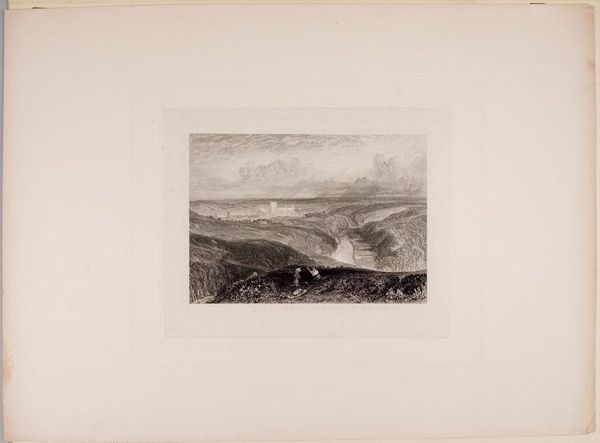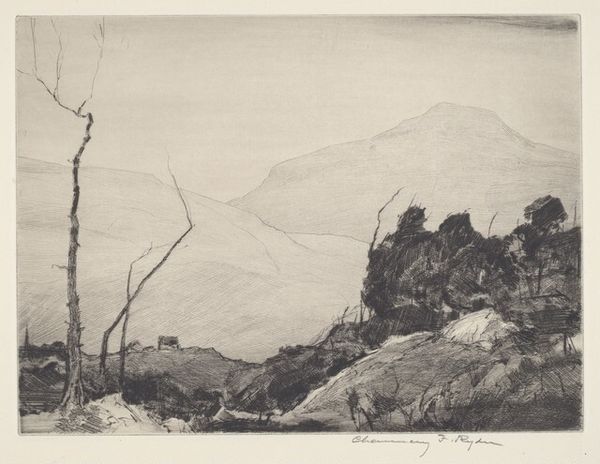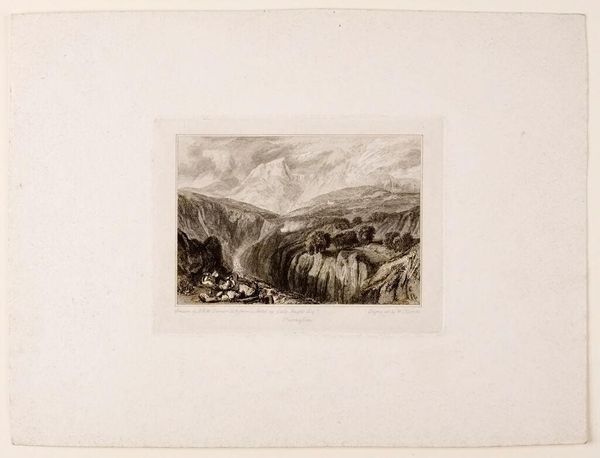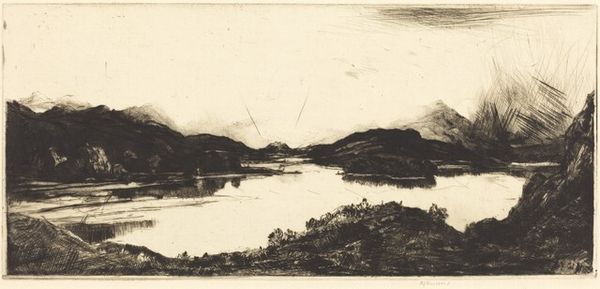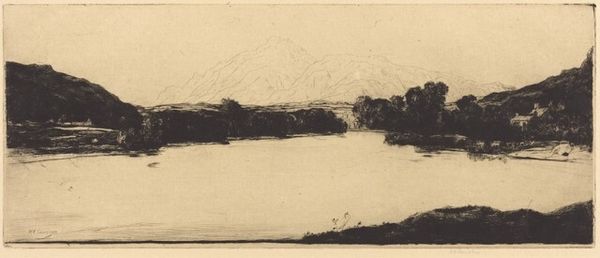
Dimensions: plate: 12.7 × 32.7 cm (5 × 12 7/8 in.)
Copyright: National Gallery of Art: CC0 1.0
Editor: So, here we have "Shap Fells," an etching by Frank Short, dating from around 1902. There’s a somber mood to it, a stillness in the landscape, but also a feeling that something is about to happen with those dramatic clouds. How do you interpret this work? Curator: This piece, for me, speaks volumes about the relationship between humanity and nature during that period, and how that dynamic was evolving. We see a seemingly untouched landscape, yes, but look closer. There's evidence of human activity, however subtle, in the distant structures. Do you notice that contrast between the wild, untamed sky and the cultivated land? Editor: I do, it's a really interesting contrast. Is it possible Short was making some sort of comment on industrialization? Curator: Absolutely! Given the timeframe, at the height of industrial expansion in England, artists like Short were grappling with its impact on the environment and society. The Romantics, before him, had championed the sublimity of nature, often as a direct response to industrial progress. This work seems to carry echoes of that tradition, but also suggests the incursion of industrialisation into even the most apparently ‘natural’ environment. Do you see this work as a celebration of nature, or a lament for what’s being lost? Editor: It's definitely bittersweet. I'd say it captures a moment of transition, of inevitable change, more than anything else. Thanks so much for pointing that out! It's not just a pretty landscape, it is imbued with social and political concerns. Curator: Exactly! Art is never created in a vacuum. Seeing the social and political dynamics embedded within artworks like this etching allows us a deeper understanding of our past, present and future.
Comments
No comments
Be the first to comment and join the conversation on the ultimate creative platform.
